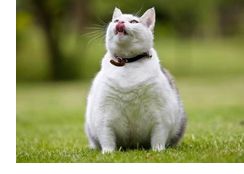
Has your pet packed on some winter weight? While some pets need a bit more food over the colder months to make up for the extra energy they burn while active, others may be more reluctant to move about when the chill sets in. This can lead to a bit more blubber around your pet’s middle.
Just like humans, extra weight puts extra stress on the body, increasing the chance of diabetes, liver problems and arthritic pain.
Many pet owners don’t even realise that their pet is overweight!
There are a few tests you can make to determine obesity in your pet:
Look at your pet from above – there should be a visible waistline. Look at your pet from the side – there should be a visible inward curve of the tummy from the base of the ribs to the inside thigh. Feel your pet’s backbone and ribs – you should be able to feel them without pressing too much.
If your pet has failed these simple tests it’s time to get your pet onto a diet to shed those kilos!
The following steps should be initiated under the supervision of your vet:
DIET
When a pet is overweight, and there are no medical conditions present, it basically means that the caloric intake is exceeding the amount of calories spent. Consultation with your veterinarian will help you to determine how many calories your pet needs, a suitable food and the amount of food needed per meal. We will help recommend a suitable diet that is low in calories and still nutritionally viable.
EXERCISE
Exercising regularly burns calories, reduces appetite, changes body composition and increases your pet’s resting metabolic rates, which all contribute to better health and body weight. Gradually step up the amount of exercise your pet is getting, and if your pet is older or has a condition seek advice from your vet to determine a healthy amount.
CHANGING THE WAY YOU THINK
Often overweight pets are the result of too many treats during the day, whether it is pet friendly biscuits or leftovers from the dinner table. This means that owners must also adapt their behaviours to keep those extra bits from reaching their pet’s stomachs.
EXTRA TIPS
- Don’t let your pet be present during meal times.
- Use the pet bowl for any food.
- Reduce snacks and treats.
- Portion several smaller meals throughout the day instead of one main one.
- Use attention, toys and playtime as rewards.
If you think your pet has packed on a few please contact Pet Doctors and we will help put your pet on the road to a healthier future.


